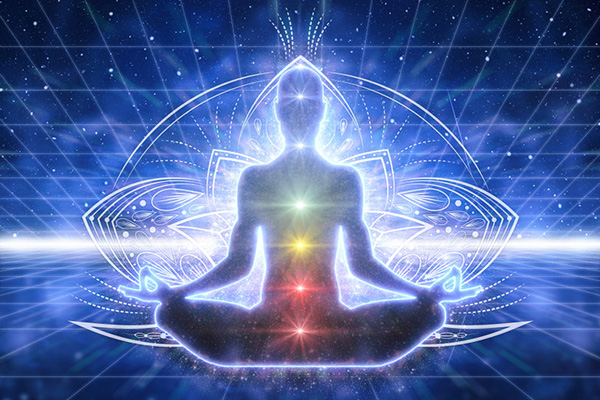ego
Don’t Walk On Eggshells Anymore!
 Do you often find yourself around people that make you feel like you have to monitor every single thing you say, for fear you may be hurting their feelings? Do you constantly have to be cautious and guarded around certain people in your life, because they internalize everything you say? It really is like walking on eggshells!
Do you often find yourself around people that make you feel like you have to monitor every single thing you say, for fear you may be hurting their feelings? Do you constantly have to be cautious and guarded around certain people in your life, because they internalize everything you say? It really is like walking on eggshells!
I used to have a friend like that. At first I complied, but then one day I decided to start talking like I would normally talk to my other friends. I wanted to see what effect it would have on this person. Well, it actually helped in the end, as it soon made her see how silly she was being. In fact, she even confessed to how she felt bad for reacting as if the entire world revolved around her and her feelings. It turned out to be a meaningful opportunity for her personal growth.
Also, have you ever known anyone whom you shared some inner most concern or anxiety with, and they act like you are making a mountain out of a molehill? You trusted them by sharing your inner most fear or heartache, and they react like it is nothing or you are just being silly. They may even turn around and act as if what you are saying is just plain wrong, or irrelevant! As a highly sensitive person I have experienced this many times in my life and it’s no fun, trust me. And if you’re like me, you just stop talking to this person all together about anything that may deeply matter to you.
These interpersonal experiences can be frustrating and hurtful, but also very valuable to learn from. As soon as this kind of interaction happens with someone, it is useful to reflect on whom you can really trust and have faith in, and who not. If you become more aware of whom you surround yourself with, more people will come into your life that will truly hear you and really have compassion and a deep understanding of what you’re trying to impart. They will also be willing and able to give great advice and be a great sounding board for you, without being egotistical or simply uncaring!
Navigating Energy Challenges – Manual Versus Automatic
 I had always been fascinated with driving a stick shift car, as my dad drove several such vehicles in my childhood years. On our third date, my ex-husband took me to an empty parking lot and showed me the ropes on how to drive a stick shift. However, despite his valiant attempt to teach me, I failed miserably.
I had always been fascinated with driving a stick shift car, as my dad drove several such vehicles in my childhood years. On our third date, my ex-husband took me to an empty parking lot and showed me the ropes on how to drive a stick shift. However, despite his valiant attempt to teach me, I failed miserably.
I reflected on this experience recently, synthesizing an analogy to what I had experienced twenty-five years ago, and found an interesting correlation with my chakra recovery journey.
Also known as Kundalini awakening, the chakra recovery process has not been an easy one for me. I literally felt like I was going to die on many occasions. Six years into this journey, I still incorporate daily energy self-care in the form of meditation, visualization, Epsom salt baths, aromatherapy, and other spiritual practices.
But I have noticed progress! My mind is so much clearer these days, and my sleep more efficient. Most of all, I radiate more kindness, truth, and an open mind of late. And I do believe the best is yet to come!
This reminded me of the ease with which one usually drives an automatic transmission vehicle. To me this is analogous to the ultimate goal of spiritual self-care: to be able to harness the energy of a fully-tuned, balanced chakra system and apply it to everyday life. A person naturally flowing with energy is able to handle more challenging situations with greater ease. Once the crown chakra starts to open, this is when innovative, eternal wisdom flows through. Then we can begin to grasp the rhythm and precision necessary to operate our energy more fluidly and automatically, instead of like a ‘stick shift.’
The Many Deaths And Rebirths In Your Lifetime
 You have already died many deaths. Many versions of you will ‘die’ in this lifetime. And, many versions of you will be reborn.
You have already died many deaths. Many versions of you will ‘die’ in this lifetime. And, many versions of you will be reborn.
Of course, you have also passed through the veil between this life and the next for many past lives. But in this case, I am referring to ‘deaths’ we suffer in this lifetime.
We can identify these dramatic changes, transitions, shifts, or ‘deaths’ in our astrological chart. Your Saturn Return, for example, occurs around the time of our 30th birthday. Our Saturn Return forces us to take an honest look at everything we may have been avoiding until now. It forces us to make much needed changes and improvements. It is the ending of our youth and the birth of our new adult self.
We do not remain the same person throughout our lifetime. Our goals, ideas, and life lessons all serve their purpose until they are phased out to let in new information, new ideas, and new opportunities for growth. If we do this right, life keeps changing us. We continue to grow and expand.
For this purpose, it is wise to interact with people who have different beliefs, practice other religions, and have other political affiliations compared to our own. And more importantly, to really listen to them. We must allow all the information in and trust our intuition to let our beliefs and understanding of life continuously evolve.
Our life experiences constantly challenge and change our ideas, goals, and views. We are constantly shedding our old skin. Just as our body changes every day we are alive, so does our soul. We take in every experience, whether we know it or not. It’s like adding ingredients to a recipe.
Embrace these deaths and births along your life path. They are needed for your soul growth and spiritual expansion. I’ve witnessed over the years some people really fighting change and resisting growth…and it always makes them miserable. Fluidity and acceptance are spiritually essential. Simplicity will bring you inner peace.
Conscious Conflict Resolution
 Dealing with tension and conflict is one of the most challenging dynamics in friendships and relationships. We have all found ourselves in a shouting match with someone we love, or concluding an argument feeling awful and unresolved.
Dealing with tension and conflict is one of the most challenging dynamics in friendships and relationships. We have all found ourselves in a shouting match with someone we love, or concluding an argument feeling awful and unresolved.
Getting to the root of an issue without all the drama sometimes feels impossible. But conflict resolution is a skill, and one that can be honed with practice and patience.
The following strategies are helpful in shifting from overreaction to consciously seeking resolution when faced with difficult conversations or conflict scenarios.
Pause For Self-Awareness
Pause and identify what you are feeling. Step back from the feeling and merely observe it, as well as any thoughts that come along with the feeling.
Recognize that ‘you’ are not the feeling; it is a simply a sensation you are experiencing. Often people will say they are ‘angry,’ but words are powerful and this indicates that you have identified with the anger. You are actually saying: ‘I am anger.’
Do not choose to ‘be anger.’ You are merely experiencing anger. Shifting this mindset can help to separate your rational mind, from the emotional sensation of anger (or hurt, or whatever feeling you may be experiencing).
Once you are able to observe your emotions and thoughts in this way, it becomes much easier to avoid reacting from them. By not reacting, you give yourself the opportunity to think about your response first, and consciously choose your course of action.
How To Avoid Empath Ego-Traps
 Being an empowered empath is a wonderful gift and blessing. But the empath ‘label’ can also become problematic when it is misconceived by some as meaning more than it truly signifies.
Being an empowered empath is a wonderful gift and blessing. But the empath ‘label’ can also become problematic when it is misconceived by some as meaning more than it truly signifies.
There are very common ego-traps that some empaths and highly sensitive people get hung up on with regards their empathic experiences. These ego-traps can be very counterproductive, as it may actually be holding them back from meaningful personal growth and progressing our spiritual path.
These ego traps are easy to get wrapped up in, but they are not a sign of weakness or failure. The experience of being an empath is often intense and confusing. These ego-traps offer lessons for us that often go hand-in-hand with life as an empath.
Some of the typical empath ego-traps are as follows:
Empaths Always Know Best
Assuming we are always right about how we ‘read’ a situation or person, or needing to save everyone and be everybody’s ‘therapist.’ We may have a good read that something is amiss, or that someone is upset, but its unwise to assume we always know exactly why.
Often empaths will feel something from someone and decide for themselves why that person is feeling that way. This is a good way to create conflict and tension in relationships! Instead of assuming, rather ask.
And if the person doesn’t want to talk about it, try assuming it is not about you, and that maybe you have no idea what is really upsetting them. Start there. Give the person space and do not make it about you. Continue reading
Spiritual Awareness Belongs To Everyone
 The other day, while eating breakfast with my family, my son teased me by calling me a ‘boomer.’ Annoyed, I looked up from my phone and asked him why he said that? Apparently, I was holding my phone ‘incorrectly’ and I had the nerve to gingerly scroll the menu with my pinky finger in the air!
The other day, while eating breakfast with my family, my son teased me by calling me a ‘boomer.’ Annoyed, I looked up from my phone and asked him why he said that? Apparently, I was holding my phone ‘incorrectly’ and I had the nerve to gingerly scroll the menu with my pinky finger in the air!
“Mom, you are holding the phone like an old lady, squinting your eyes to see the screen, because you’re a boomer.”
“Well excuse me, Mr. Gen Z,” I replied, trying not to laugh. “You have it all wrong, as I happen to be a proud member of Generation X. I was not born during the time of the ‘baby boomers.’
This brought up a family discussion about younger generations acting as if they are so ‘woke,’ and automatically assuming their parents and grandparents are ignorant or behind the times. Meanwhile it seems most younger people are not necessarily as aware and informed as they’d like to believe they are.
I remember when I was young adult, thinking that my parents and grandparents were ‘square’ and did not possess all the wisdom they seemed to claim they had. So, to be fair, I displayed the same youthful arrogance or pomposity back then that my son did at the breakfast table.
While I was doing the breakfast dishes, the conversation got me thinking about humanity and how we have evolved as a species. When does change in behavior really occur and what is it that makes a person spiritually aware and truly wise? What is spiritual awakening and what does the term mean to most people?
Many spiritual seekers use the term ‘awakening’ loosely to refer to an inner epiphany or a change in personal consciousness that makes one ‘more special’ or ‘superior to others,’ but I don’t think true awakening is anything like that.
Dealing With ‘Unawakened’ Friends And Family
 Spiritual awakening is a profound shift in our perception that forever alters the way we experience life. But after we have made the shift it can be difficult to relate to less spiritually aware friends and relatives and leave one feeling lonely and deeply isolated.
Spiritual awakening is a profound shift in our perception that forever alters the way we experience life. But after we have made the shift it can be difficult to relate to less spiritually aware friends and relatives and leave one feeling lonely and deeply isolated.
The following strategies can be helpful in cultivating more harmony between yourself and ‘unconscious’ people without compromising your own energy vibration.
COMPASSION AND EMPATHY
At one time you were also not awakened. Think back to what that was like. What kind of thoughts dominated your mind? How did you feel about your life? How did you feel in general? The truth is, although you’ve gone through a spiritual awakening, you can still relate to those who have not. You have a point of reference for this.
Someone who is unconscious typically doesn’t have a pleasant inner world, because they aren’t intentionally governing it. Think back to what your life and most importantly – your relationship with yourself and your mind – looked like before your awakening. What did your own resistance look like? At some point your perspective shifted. But prior to that point – how receptive were you to changing your views and ideas? Especially when a family member came to you and said, “Hey, you’re doing it wrong.”
Put yourself in their shoes. Now that you’ve awakened you have the pleasure to start putting it to use in a way that serves the highest and best good of all. Remember that every soul is a spiritual being, and just because you have awakened to this fact, does not make you ‘better than’ anyone else. This is a trap that the ego likes to throw up early, and often along the spiritual path.
The ego is something we must constantly be mindful of. You are not more spiritual because you are vegan, or because you meditate, or because you do Yoga. If you are living in judgment of others through these practices, you are trapped in ego. Be mindful of yourself and come back to a state of compassion and empathy. Allow people to awaken in their own time.